
This post considers the timeless quality and enduring popularity of the classic Fair Isle sweater and looks at its reinterpretation by two modern designers.
A Timeless Classic
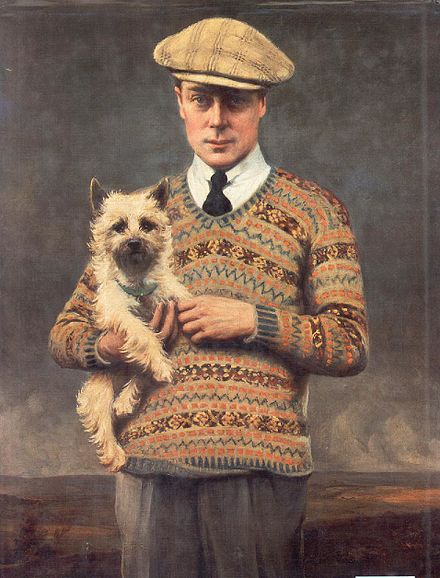
The Fair Isle sweater is named after the tiny Shetland Island off the north coast of Scotland where it was originally produced. It first became a fashionable ‘must have’ in the 1920s, when it was regularly worn by the then Prince of Wales, later Edward VIII, as a golfing sweater.
Since then, it has become a staple of the fashionable wardrobe, returning repeatedly to the catwalks in the collections of some of the world’s most famous fashion designers. Ralph Lauren featured traditional Fair Isle sweaters in his first collection in the 1980s and many other designers, such as Alexander McQueen, Karl Lagerfeld and Saint Laurent have also included it. More recently, British designer Molly Goddard has made it a key feature of her recent catwalk collections.
The styling choices of the designers and wearers may have changed over the decades, but the Fair Isle sweater has endured. Its timeless quality makes it an ideal piece for those who believe in the ‘buy less, buy better quality’ mantra of slow fashion.
Enduring Versatility
The Fair Isle sweater is an extremely versatile garment and can be worn in so many ways. As a sweater, cardigan or slipover, it can be worn fitted or oversized, cropped or extra-long. It can be dressed up or down, making it an adaptable wardrobe choice for any situation. Chic, classic and cosy, it works in the country, the city and out on the ski slopes. You can dress it up with signature jewellery and a evening skirt (see Molly Goddard below) or dress down with an untucked shirt and comfy jeans.
The cardigan can also be worn as a casual alternative to the jacket.
Choose a brightly coloured version or one in subtle, neutral tones, either way, it maintains a nostalgic and retro feel which is always in vogue.

The Traditional Fair Isle Sweater
Traditionally, Fair Isle sweaters are knitted in the round on circular or double pointed needles. They are made with 100% Shetland wool, alternating two colours per round. The ‘resting’ colour is weaved into the back of the sweater, giving it extra loft and warmth. It is the combination of multiple colours and the traditional Fair Isle pattern bands which gives the garment its complexity and traditional feel.
The varied colours of Shetland wool have been a feature of the style since the 19th century. They come partly from the different breeds of sheep, but also from natural dyes. Madder for red, indigo for blue, while lichens produce red, brown, orange and purple. Brightly coloured synthetic dyes have been available from the 1850s, but were traditionally used only in small amounts.
The Vintage Shetland Project
Inspired by the patterns and colours of Shetland knitting, fashion historian and designer Susan Crawford carefully researched the many original designs in the collection of the Shetland Museum. After selecting the most outstanding example from the 1920s to the 1950s, she then spent years transcribing them stitch by stitch. She has recreated the patterns for the modern knitter in her wonderful book The Vintage Shetland Project . It contains 27 patterns, together with carefully researched essays exploring the stories of each piece. It’s a treasury of Shetland knitting traditions and design. For anyone wanting to recreate an authentic vintage piece, this is the perfect resource.
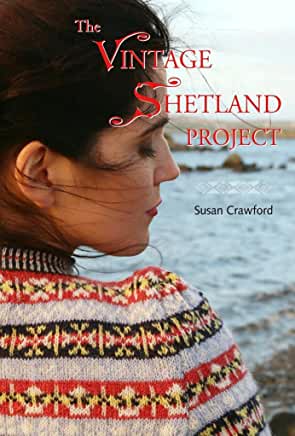
Two Modern Fair Isle Sweater Designers
1. The Artisan Designer: Sophie Ochera
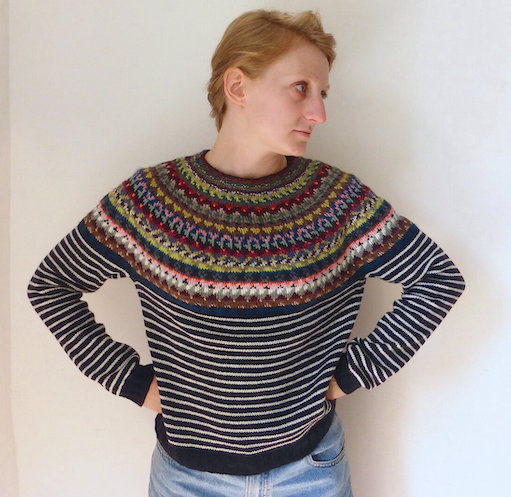

Sophie Ochera is an artisanal knitwear designer based in Normandy, France. She produces unique, modern Fair Isle knitwear of her own design, using beautiful combinations of bright colours and patterns. Each piece she produces is handmade, using 100% lambswool. This quote is taken from her website:-
“Sophie is passionate about slow fashion and motivating people, through her designs, to buy less and for better quality. She believes it should take time to create something beautiful and that everything should be valued for a long time, rather than the throw-away consumer culture we are easily swept up into. She strives to make the kind of knitwear that you will want to keep and pass on for generations to come.“
You can buy Sophie’s designs by ordering directly from her website. Alternatively, you can knit one yourself from her many patterns or kits. I’ve knitted three of Sophies designs, and am halfway through a fourth. The pattern instructions are clear and easy to follow and the designs are interesting, and just that bit challenging to knit. I absolutely recommend them.
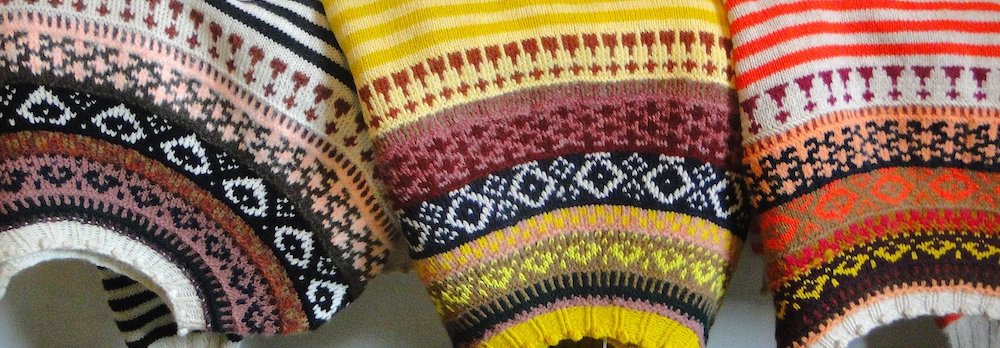
2. The Catwalk Designer: Molly Goddard
Molly Goddard is a London-based fashion designer, best known for her frothy tulle and hand-smocked taffeta dresses, the most famous of which is the pink tulle gown featured in Killing Eve.
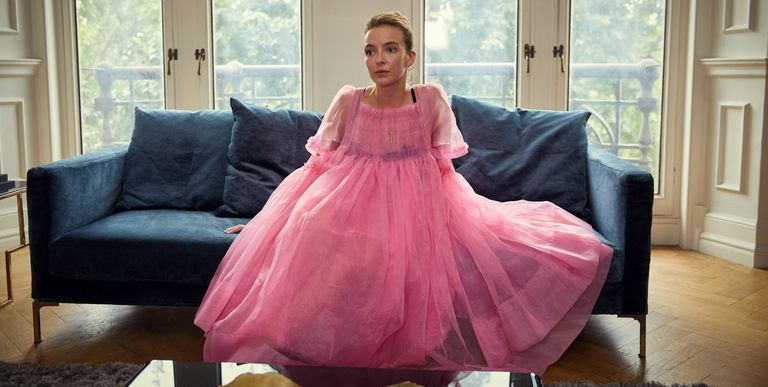
In recent years Molly’s brand has also become synonymous with fair isle knitwear. It’s shown on the catwalk unexpectedly teamed with her signature voluminous taffeta and tulle skirts and dresses. She uses traditional shapes, colours and textures for the knitwear, but combines them with unexpected fabric textures and colours to create something completely new, that looks sharp and modern yet also nostalgic and chic. Whilst I might not want to go quite as far as she does, her combinations have certainly given me some great ideas about how I could wear my knits more creatively.
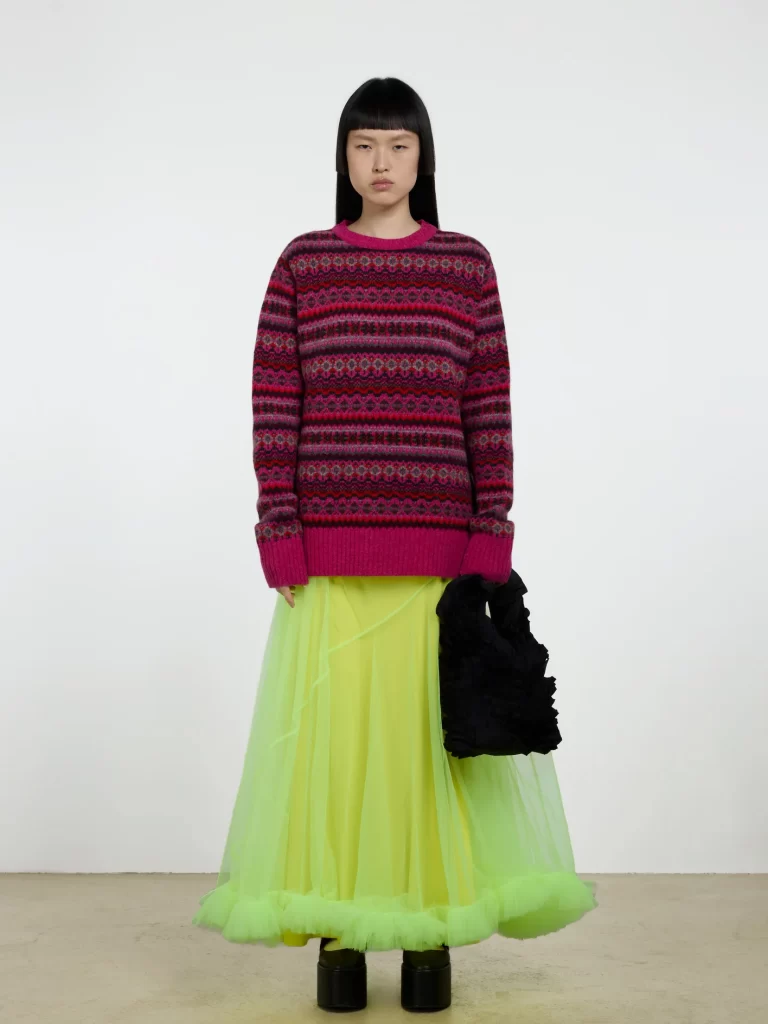
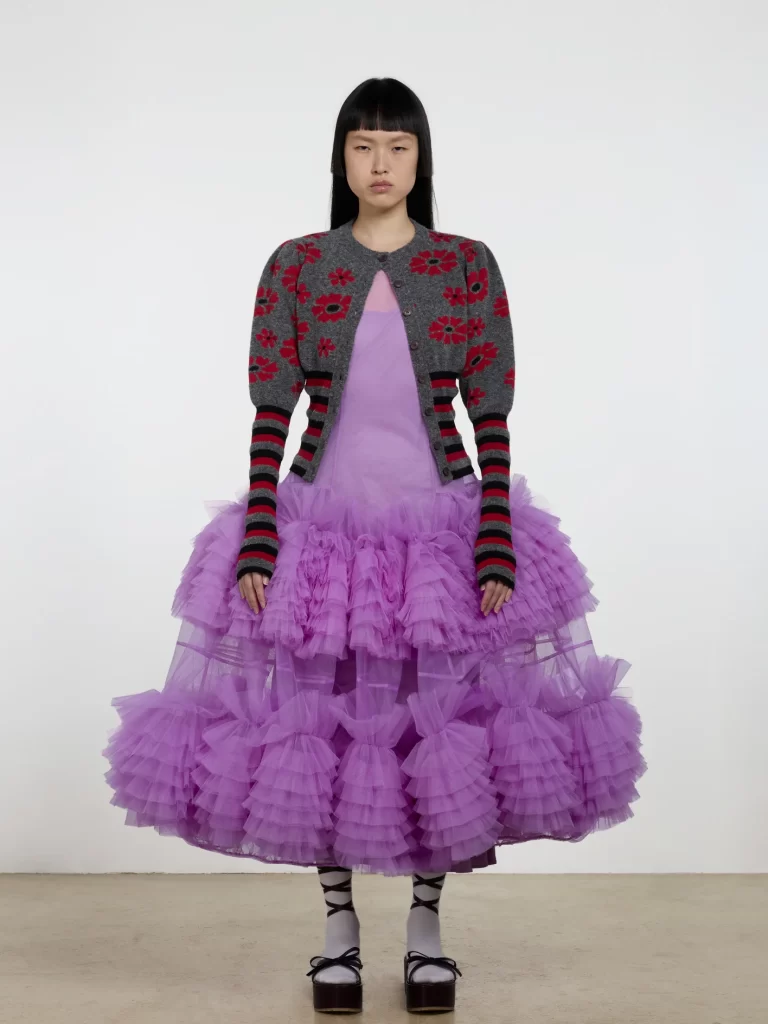
Conclusion
The Fair Isle sweater is a timeless garment that, with care, will last you for years and years. In my opinion the best versions are hand made, unique and made with 100% lambswool. Buy one or knit one, but get the best version you can afford. Yes, it will be more expensive or time consuming than a mass produced version, but creating something unique and beautiful takes time. What you will get is a garment that you’ll want to cherish, repair and hold onto forever. And hey, you can feel confident that your investment piece won’t go out of fashion. After all, Fair Isle sweaters have had a place on the runway for decades and that doesn’t look to be changing anytime soon.
Thank you for reading, I would love to read your comments below.
Sian.
You might also like…



I love these sweaters. I’ve never had the nerve to actually try and knit one yet but you never know!
Hi Kate,
Thanks for commenting.
Knitting one is easier than it seems. A good pattern to start with is Sophie Ochre’s Trouville. It was my first attempt through a Tribe Yarns KAL and I think you can still get access to all the videos here.
Tribe Yarns KAL